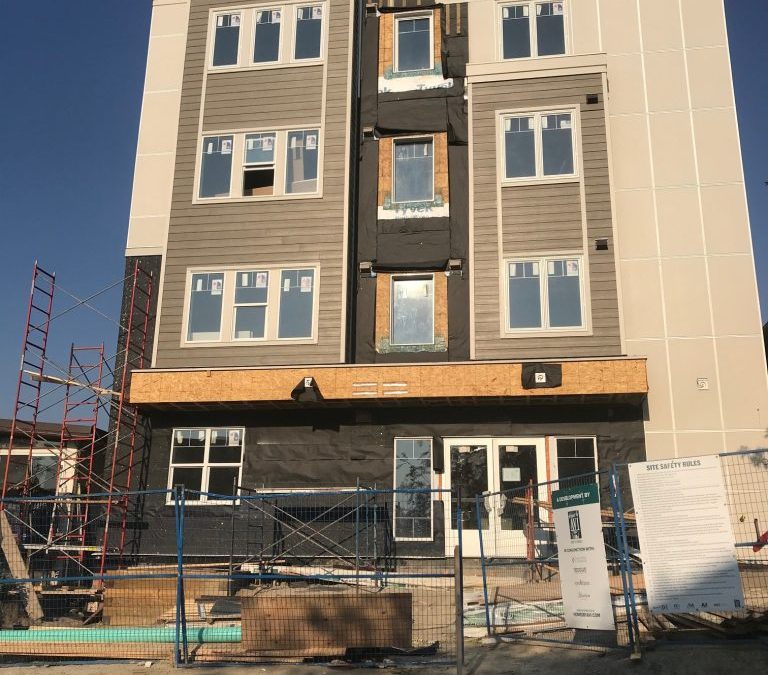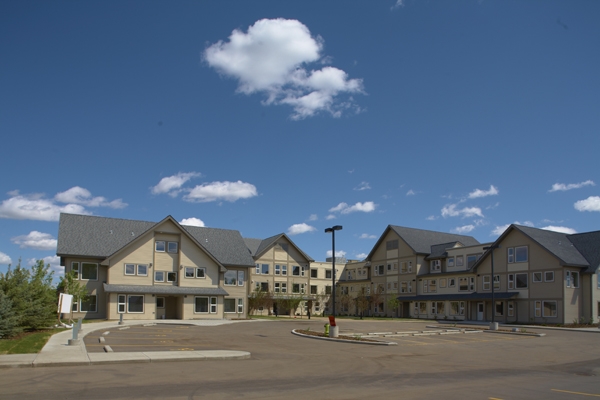
Une introduction au logement supervisé et le Logement d’abord
Une introduction au logement supervisé et le Logement d’abord
An English-language version of this blog post is available here.
Le 3 février 2021, j’étais conférencier dans le séminaire d’études supérieures de Greg Suttor au département de géographie et de planification de l’université de Toronto (un grand honneur puisque Greg est un de mes mentors depuis longtemps). Ma présentation portait sur les liens entre les univers du logement et du sans-abrisme au Canada (et plus particulièrement à Toronto).
La présentation entière et détaillée est disponible (en anglais) ici.
Voici 10 choses à savoir à ce sujet :
1. Au Canada, la plupart des gens qui réfléchissent à la question s’entendent pour dire que le logement subventionné est essentiel afin de le prévenir et de répondre au sans-abrisme. Toutefois, il existe des débats importants : la quantité additionnelle de logements abordables requis; à qui devraient servir le nombre limité de logements; quels sont les meilleurs modèles de logements subventionnés; et à quel degré chaque logement devrait-il être subventionné?
2. Les élus ne s’entendent pas sur la répartition des couts des subventions. À l’heure actuelle, le consensus est que le gouvernement fédéral canadien devrait s’acquitter des frais de développement (par exemple, le capital), mais on ne s’entend pas à savoir qui devrait financer les frais d’exploitation conséquents. Les paliers de gouvernements jouent en quelque sorte à voir qui cèdera en premier, ce qui limite la quantité de nouveaux logements abordables créés chaque année.
3. En Ontario, lorsque le sans-abrisme est survenu comme défi de politique publique dans les années 80, les personnes itinérantes sont devenues un point focal majeur de la politique sur le logement. Une approche de l’époque consistait à reloger les itinérants dans des logements abordables et leur offrir de l’assistance sociale. Aujourd’hui, cette approche s’appelle le logement supervisé (et de nos jours, Logement d’abord en est presque un synonyme). La plupart des résidents qui ont recours au logement supervisé au Canada sont des adultes célibataires n’ayant personne à charge et qui ont de sérieux défis de santé mentale.
4. Ce changement de cap n’est pas survenu dans un vacuum politique – assurément, le militantisme politique a joué un rôle central à son avènement. À Toronto, cela a compris la création du Singles Displaced Persons Project (ou « le projet des personnes célibataires déplacées »), du mouvement des « survivants/consommateurs » qui avait pour slogan « homes not hostels » (ou « un domicile, pas du dépannage ») ainsi que la mise sur pied d’organismes tels Houselink Community Homes, et Homes First Society.
5. Le genre d’appui social offert conjointement avec le logement supervisé fait l’objet de débat. Lorsque j’offrais de tels appuis en travaillant à Toronto, j’aidais les locataires à tenir compte de leurs rendez-vous (par exemple chez le médecin, avec de travailleurs sociaux pour le revenu, ou pour des comparutions en cour). Je les ai souvent accompagnés à leurs rendez-vous. Je les ai défendus s’ils étaient menacés d’éviction et les ai aidés à déménager lorsque cela était nécessaire. Il m’est souvent arrivé de les inviter à prendre un café également.
6. Le logement supervisé permanent adapté au milieu facilite l’organisation d’activités sociales en groupe. On parle ici d’un édifice entier où l’ensemble des locataires ont recours au logement supervisé (plutôt qu’une simple proportion de ses locataires). Ce genre de logement supervisé comprend habituellement du personnel d’appui sur place et dans certains cas, le personnel demeure sur place en tout temps. Le logement supervisé permanent adapté au milieu peut offrir un important appui avec la gestion d’invités et facilite la mise sur pied de programmes alimentaires, d’exercice physique, et de cours d’art.
7. Au Canada, le concept de Logement d’abord – qui est presque synonyme du logement supervisé – a commencé à être accepté au début des années 2000. La Ville de Toronto a beaucoup misé sur le concept à partir de 2005, et la Calgary Homeless Foundation s’y est intéressée également; les militants et les intervenants du domaine s’en servent maintenant à travers le Canada. La stratégie du Logement d’abord permet d’éliminer la condition exigeant qu’un locataire potentiel soit « prêt » à être logé pour l’être.
8. L’idéologie entourant le Logement d’abord ne se situe ni à droite ni à gauche de l’échiquier politique. Elle sert plutôt de “troisième approche” stratégique grâce à laquelle elle trouve des adeptes parmi les entrepreneurs chefs de fil, les élus de toute allégeance politique, et toute une gamme de militants. Cela s’explique en partie par le fait que le Logement d’abord promeut habituellement une redistribution des ressources existantes. Ça s’explique aussi par le fait que les adeptes du Logement d’abord favorisent l’usage de logements privés à but lucratif plutôt que des logements appartenu par des organismes à but non lucratif.
9. Le mérite de l’approche Logement d’abord a été démontré davantage par l’étude canadienne At Home/Chez soi. Dans cette étude randomisée et contrôlée, des participants de cinq villes avec des besoins modérés ont reçu une forme de Logement d’abord incluant une intervention de type Soutien d’intensité variable, tandis que les participants avec des besoins élevés ont reçu une forme de Logement d’abord incluant une intervention de type Suivi intensif. Les participants ont été interviewés tous les trois mois pendant deux ans. Les résultats étaient concluants et moins dispendieux.
10. La Stratégie nationale sur le logement, dévoilée en 2017, ne contient aucune provision spécifique pour le logement supervisé, et ne mentionne pas le Logement d’abord. Pourtant, dans le discours du Trône de septembre 2020, le gouvernement canadien s’engageait à « complètement éliminer le sans-abrisme chronique ». De plus, seulement 5% du nouvel argent a été mis de côté pour réduire le sans-abrisme chronique.
En conclusion, la bonne nouvelle c’est que la plupart des leadeurs du Canada croient que le logement supervisé est une bonne façon de prévenir et de répondre au sans-abrisme. Leur usage du langage de Logement d’abord en témoigne. La mauvaise nouvelle, c’est que la plupart des élus hésitent à engager les fonds nécessaires pour réduire le sans-abrisme – par exemple, la Stratégie nationale sur le logement semble insuffisamment financée pour atteindre l’objectif du gouvernement canadien de mettre fin au sans-abrisme chronique.
Je voudrais remercier Damian Collins, Stéphan Corriveau, John Ecker, Joshua Evans, George Fallis, Susan Falvo, Hayley Gislason, David Hulchanski, Michel Laforge, Steve Lurie, Geoffrey Nelson, Deborah Padgett, Angela Regnier, John Rook et Vincent St-Martin pour leur aide à la rédaction de ce billet.

